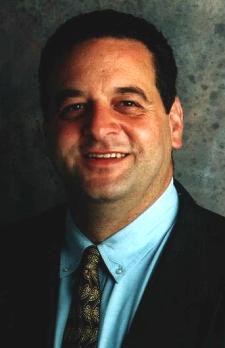PROJECT HOMECOMING: SAUSALITO SCHOOLS SCORING POORLY -The daily report card - May 19,1997
The Daily Report Card
--- Monday --- May 19, 1997 --- Vol. 7 --- No. 43 ---
THE NATIONAL UPDATE ON AMERICA'S EDUCATION REFORM EFFORTS
===== MONEY MATTERS =====
PROJECT HOMECOMING: SAUSALITO SCHOOLS SCORING POORLY
A "conundrum of race, class and money" plagues Sausalito,
Calif., schools, writes the L.A. TIMES (LaGanga, 5/16). Nestled
in rich Marin County, the district does not lack funding: the
district spends nearly $12,000 per student, not including special
education funds, reports the paper. Despite a flow of funds,
significant numbers of students from second to seventh grade
perform below the 40th percentile in language skills and do not
even reach that mark in reading, according to test scores from
the 1996 Comprehensive Test of Basic Skills.
"It's the biggest mess I've ever seen," declared Josephine
Pearson, who left her teaching job at Sausalito's Bayside/Martin
Luther King School this year after nearly seven years. "It's so
sad. All that money and nothing for those kids."
Sausalito boasts conditions most schools would die for:
class size of 15 to 20 students; art and drama teachers; a
science specialist and computer instructor; the district ranks
number 10 in student spending out of nearly 1,000 statewide.
Yet, children are not achieving and more and more parents are
sending their children to private schools. The paper reports
that the school population has decreased by more than a third
since 1990.
The Sausalita school district is comprised of two enclaves:
one that is 94% white, with an average annual household income of
$107,485; the other located in Marin City, in which many families
dwell in public housing. Theories abound as to why the school
system is floundering, including white flight and social factors
that prevent children from learning. Others point to ineffective
school leadership, with some school district residents calling
for a recall of the board and superintendent.
Racism also may be a factor, according to some parents.
"Race is an issue at the school," said Andrea Leslie, co-
president of the Bayside/MLK PTA. "I can't fix racism. It's
part of the problem. It could be what keeps Sausalito families
away."
Barbara Chriss, a former Bayside/MK principal, claims the
problem stems from a lack of consistency "across the classes or
the grades in curriculum and in the behavior and performance
expectations, so the children are confused."
The TIMES writes that the district's problems encapsulate a
host of questions pondered by schools nationwide: "Just how
important are funding and class size? What makes children learn?
Does race play a role in how children learn? Can problems of
poverty and drug abuse be overcome in the classroom?"
"A lot of classic urban explanations don't explain the
situation here," said Michael Kirst, professor of education at
Stanford U. "It's a puzzle and an interesting social case."
Parents advocating for a recall of school leaders have
formed a group called Project Homecoming, a racially diverse
coalition of parents, educational consultants and residents of
Sausalito and Marin City. The group's motto is "Break the
Silence."
At one meeting, parent Cathomas Starbird, an African
American, explained why she does not send any of her children to
the public schools. "They don't educate children as far as I'm
concerned," she explained. "Nor do they provide an environment
for learning. Money is not the issue."
http://www.ofcn.org/cyber.serv/academy/rptcard/1997/drc743.html


<< Home